Inventory Collaborative 2016beta Emissions Modeling Platform
Back to Collaborative Wiki Main Page
Release Timeline
- March 1, 2019: 2016 base year data, software, and scripts
- TBD: 2023 and 2028 projection year data
Download
The initial release of the 2016beta platform is for the year 2016 only. It can be downloaded from the Intermountain West DataReport Issues/Feedback
Users of the 2016beta platform are encouraged to report their findings on the platform components.Questions and problems with the data, and problems with the software in the platform release package are examples of the types of issues to post to the forum. The Collaborative workgroup co-leads will work through the reported issues and assimilate changes to the platform into the 2016 version1 platform.
2016beta Platform Support/Issues Forum @ CMAS Center
Description
In late 2017, a group of state, local, tribal, regional, and federal air planning agencies initiated a collaborative process to build a national emissions modeling platform (EMP) for simulating air quality in the U.S. The 2016beta EMP is the first product from the National Emissions Inventory Collaborative that includes a full suite of base year (2016) and future year (2023 & 2028) inventories, ancillary emissions data, and scripts and software for preparing the emissions for air quality modeling.A coordination workgroup, ten sector workgroups, and a modeling workgroup were staffed by over 245 state and regional air agency, EPA, and Federal Land Manager employees. The work of the sector workgroups to build 2016 base year and future year inventories is documented in a series of sector-specific specification sheets below. These specification sheets detail the origin of the inventories and ancillary data used to simulate criteria pollutant, and in many cases hazardous air pollutant, emissions for the U.S., Canada, and Mexico.
The summary stacked bar plots below compare U.S. total criteria pollutant emissions for the 2016beta platform back to 2011 and 2014 base and future year emissions.
Documentation
The documentation is available as a separate document for each modeling sector:
- Mobile - Onroad
- Mobile - Nonroad
- Mobile - Nonroad - C1/C2 Commercial Marine Vessels
- Mobile - Nonroad - C3 Commercial Marine Vessels
- Mobile - Nonroad - Rail
- Nonpoint - Agriculture
- Nonpoint - Area Fugitive Dust
- Nonpoint - RWC
- Nonpoint - Other
- Oil & Gas - Nonpoint
- Oil & Gas - Point
- Point - EGU - ERTAC
- Point - EGU - IPM
- Point - non-IPM
- Point - Fires - Agricultural
- Point - Fires - Wild and Prescribed
- Canada - Mobile - Onroad
- Mexico - Mobile - Onroad
- Canada/Mexico - Point
- Canada/Mexico - Point - Fires
- Canada/Mexico - Nonpoint
Summary Plots
Descriptions of the emissions platform cases shown in the plots below are as follows:
- 2011en, 2023en, 2028el = Final 2011, 2023, and 2028 cases from the 2011v6.3 platform
- 2014fd = NEI2014v2 and 2014 NATA
- 2016ff , 2023ff, 2028ff = 2016beta platform
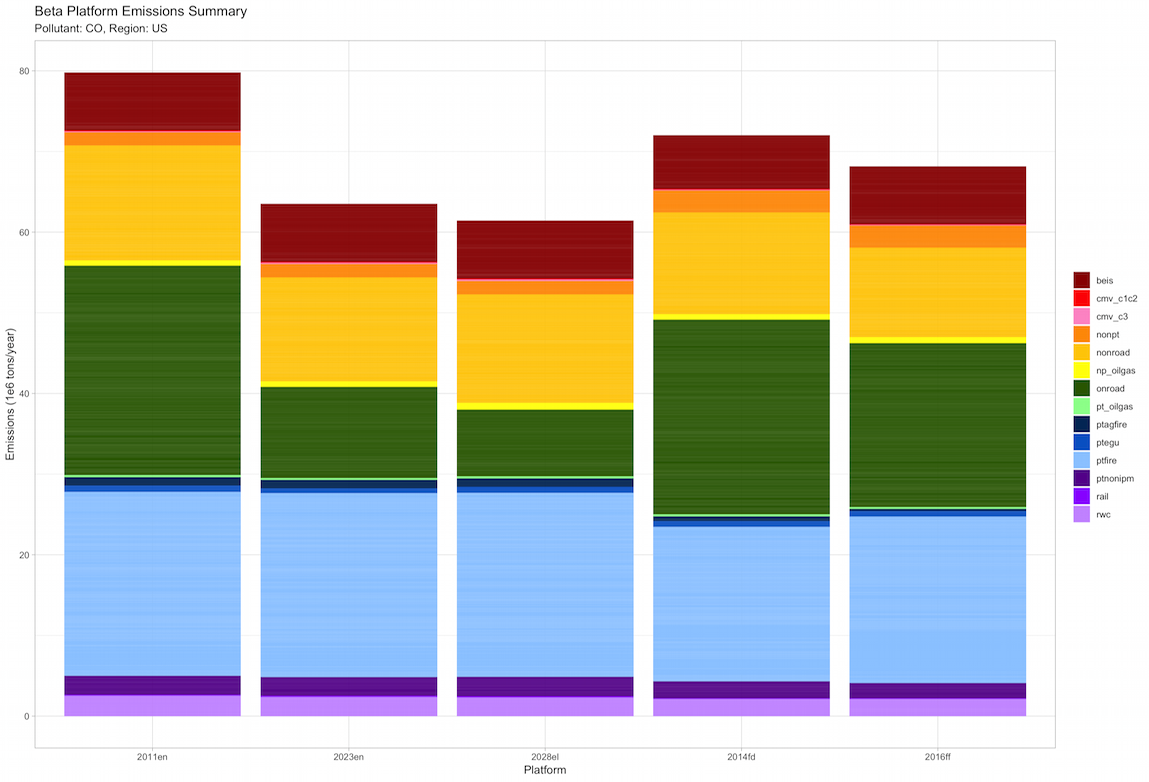

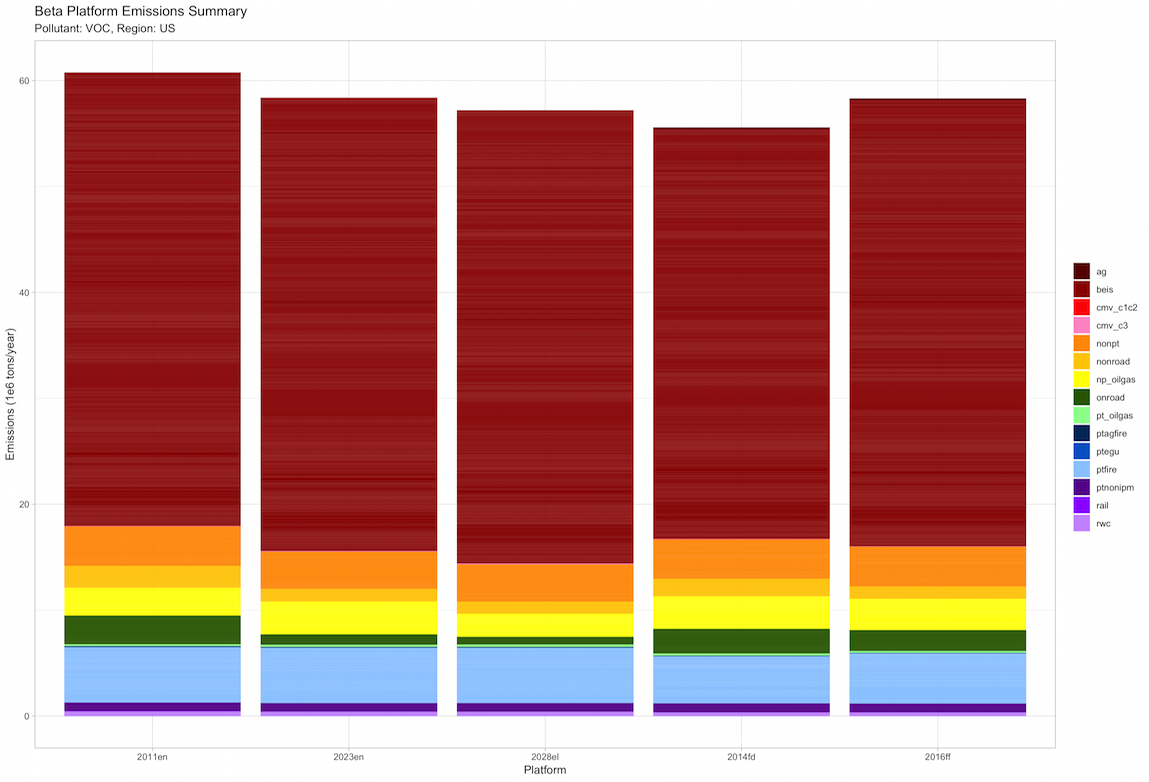
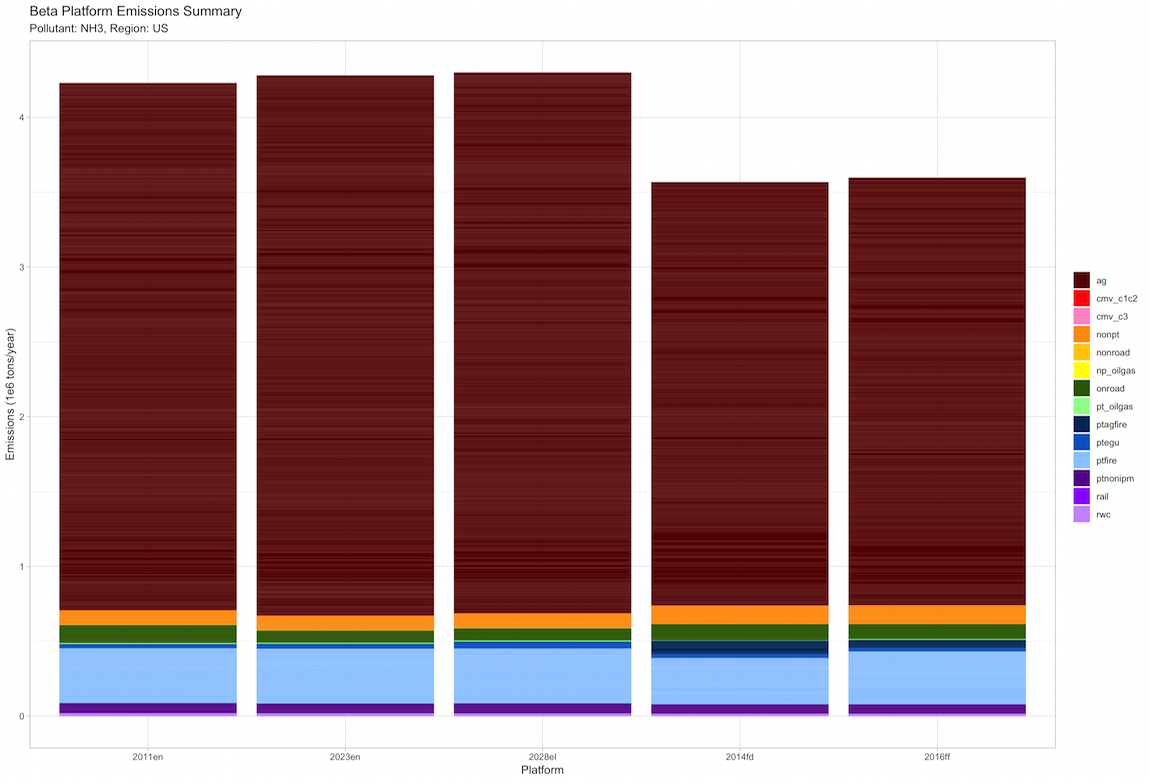
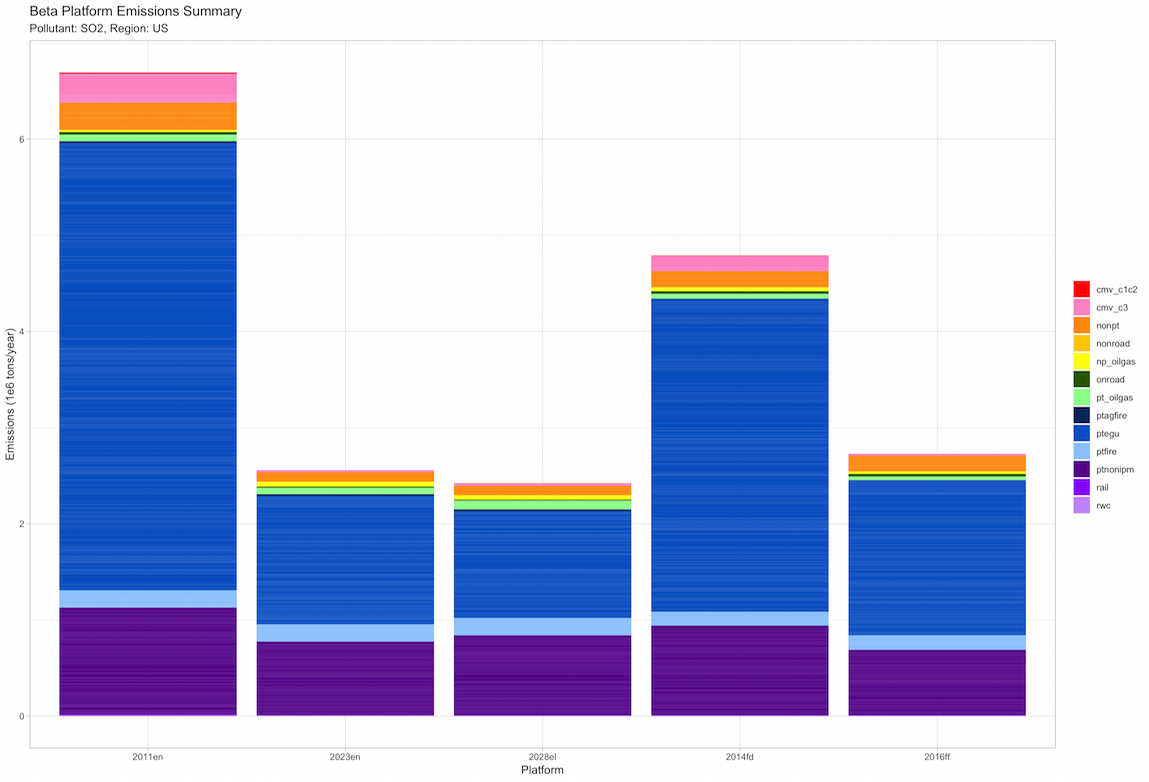

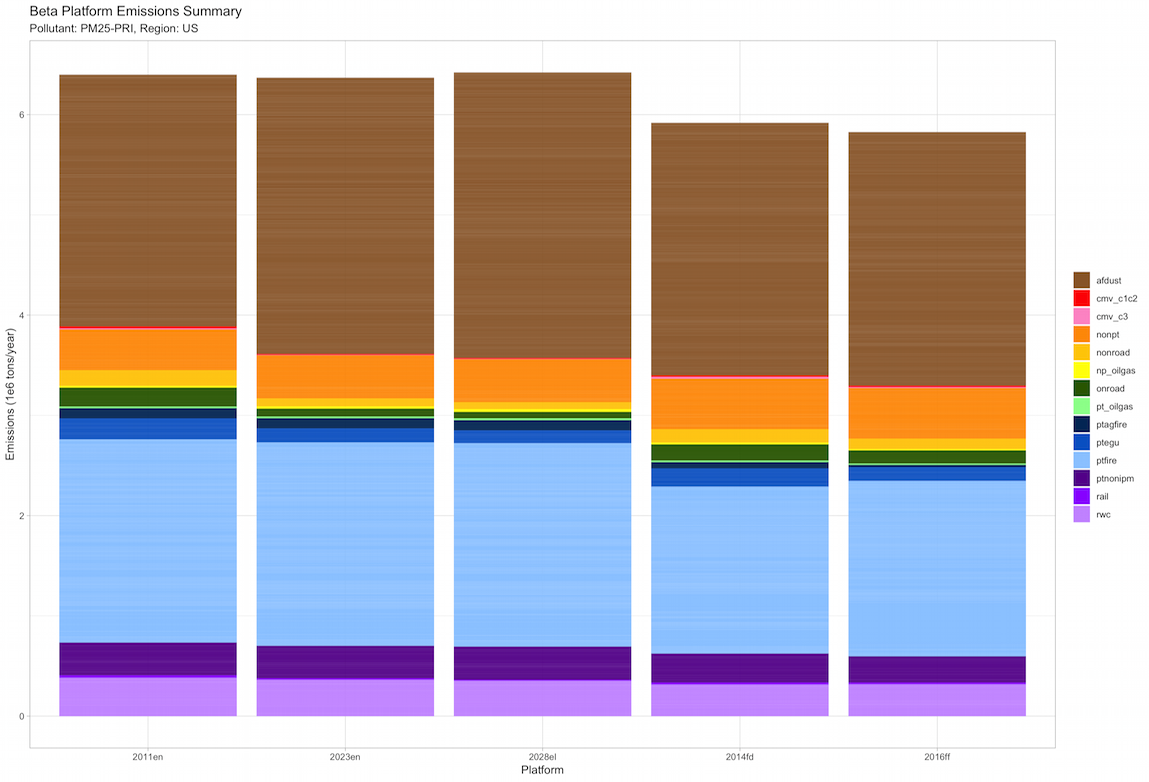
Additional Analysis Products
Access 2016beta platform emissions summaries, including comparisons to previous (2011 and 2014) emissions modeling platforms and future year inventory projections.LADCO Plot Viewer
Pre-generated, graphical emissions summaries included bar charts, thematic maps, and gridded maps
IWDW Emissions Review Tool
Interactive website with capabilities to generate customized bar charts and maps of the 2016beta and future year emissions
Collaborative 2016beta Google Drive
Folders by inventory sectors with zip files of tabulated SMOKE report emissions report files. See the zip file tagged "annual_reports" in each sector directory.
How to Cite
2016beta platformNational Emissions Inventory Collaborative (2019). 2016beta Emissions Modeling Platform. Retrieved from http://views.cira.colostate.edu/wiki/wiki/10197.
Specification sheets (e.g., onroad mobile)
National Emissions Inventory Collaborative (2019). Specification Sheet - 2016beta Platform Onroad Mobile Emissions. Retrieved from http://views.cira.colostate.edu/wiki/Attachments/Inventory%20Collaborative/Documentation/2016beta/National-Emissions-Collaborative_2016beta_mobile-onroad_28Feb2019.pdf.
Acknowledgements
Assembling, evaluating, and documenting the initial release of the 2016beta platform involved over 245 committed air quality scientists across multiple state, local, tribal, and regional agencies, and EPA and Federal Land Management agencies. Several consultants and industry employees contributed to the workgroups through participating in conference calls and presenting on important inventory developments that were relevant to the Collaborative.Particular acknowledgement of the workgroup co-leads is due, as they worked to recruit, organize, and lead their workgroups through the Collaborative platform development and documentation process.
Refer to the Collaborative inventory workgroup wikis for complete lists of the workgroup co-leads and participants.